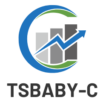Buying an existing business can be a smart way to become an entrepreneur without starting from scratch. I’ve helped many aspiring business owners navigate the complex world of business acquisition financing and understand the various options available to them.
When it comes to how to finance a business purchase there’s more than just traditional bank loans to consider. From SBA loans to seller financing and even creative funding methods I’ll guide you through the most effective ways to fund your business acquisition. After spending years in business finance I’ve learned that choosing the right financing method is crucial for long-term success and sustainable growth.
Key Takeaways
- Traditional bank loans, SBA loans, and seller financing are the primary methods on how to finance a business purchase, each requiring different down payments (20%, 10%, and 15-60% respectively)
- SBA loans offer more favorable terms with lower down payments and longer repayment periods (up to 25 years), backed by 75-85% government guarantee
- A successful business purchase application requires comprehensive financial documentation, including 3 years of tax returns, financial statements, and detailed business plans
- Alternative funding methods like asset-based lending, equipment financing, and private equity investment provide options when traditional financing isn’t suitable
- Deal structuring should include clear payment arrangements, earnout structures, and transition periods, with typical down payments ranging from 10-40% depending on financing type
- Thorough due diligence and professional valuation assessment are crucial for managing financial risk and ensuring a fair purchase price
How to Finance a Business Purchase
Business purchase financing encompasses multiple pathways to fund an acquisition, each with distinct requirements and benefits. I’ve identified the most effective financing methods based on my experience working with numerous business buyers.
Traditional Bank Loans
Traditional bank loans provide straightforward financing with fixed interest rates ranging from 5% to 7%. Banks typically require a 20% down payment, strong credit scores above 700, and 3+ years of business experience. These loans work best for buyers with substantial assets, proven business track records, and companies showing consistent profitability for 5+ years.
| Traditional Bank Loan Requirements | Typical Values |
|---|---|
| Minimum Down Payment | 20% |
| Credit Score | 700+ |
| Business Experience | 3+ years |
| Business Profit History | 5+ years |
| Interest Rates | 5-7% |
SBA Loans
SBA loans offer lower down payments of 10% with longer repayment terms up to 25 years. The Small Business Administration guarantees 75-85% of the loan amount, reducing lender risk. These loans include options like SBA 7(a) for general business purchases and CDC/504 for real estate acquisitions.
| SBA Loan Features | Details |
|---|---|
| Down Payment | 10% |
| Loan Terms | Up to 25 years |
| Government Guarantee | 75-85% |
| Maximum Loan Amount | $5 million |
| Interest Rates | 6-8% |
Seller Financing
Seller financing involves the business owner accepting partial payment over time, typically covering 15-60% of the purchase price. This arrangement creates flexibility in payment terms, reduces immediate capital needs, and demonstrates the seller’s confidence in the business’s future performance. Sellers often charge interest rates between 6-10% with repayment terms of 5-7 years.
| Seller Financing Components | Common Terms |
|---|---|
| Typical Coverage | 15-60% |
| Interest Rates | 6-10% |
| Repayment Period | 5-7 years |
| Down Payment | 10-25% |
| Balloon Payment | Optional at 3-5 years |
Preparing Your Business Purchase Application
A successful business purchase application requires meticulous preparation of essential documents, financial records, and a comprehensive business strategy. Based on my experience financing numerous business acquisitions, I’ve identified the key components that strengthen a purchase application.
Financial Documentation Requirements
Lenders require specific financial documents to evaluate a business purchase application:
- Personal tax returns from the past 3 years with all schedules attached
- Current personal financial statement listing assets, liabilities & net worth
- Bank statements from the previous 6 months
- Business tax returns & financial statements from the target company
- Proof of funds for down payment through bank statements or investment accounts
- Revenue projections & cash flow analysis for the next 24 months
- Current business debt schedule & accounts receivable/payable aging reports
Creating a Solid Business Plan
A compelling business plan demonstrates the viability of the acquisition:
- Executive summary highlighting the business purchase opportunity & growth potential
- Market analysis with competitor research & industry trends
- Operating plan detailing management structure & day-to-day operations
- Marketing strategy for customer retention & business growth
- Financial projections including 3-year forecasts of revenue, expenses & profits
- Risk assessment identifying potential challenges & mitigation strategies
- Exit strategy outlining future transition or sale possibilities
Credit Score Considerations
Credit scores impact financing approval & terms:
| Credit Score Range | Impact on Financing |
|---|---|
| 750+ | Premium rates & terms |
| 700-749 | Standard approval odds |
| 650-699 | Higher rates required |
| Below 650 | Limited options available |
- Payment history on existing loans & credit accounts
- Credit utilization ratio below 30%
- Length of credit history minimum 5 years
- Mix of credit types including revolving & installment accounts
- Recent credit inquiries limited to 3 in past 6 months
Alternative Funding Methods
Alternative financing methods provide creative solutions for business acquisition when traditional loans aren’t suitable. These options leverage different types of assets or investment structures to secure funding.
Asset-Based Lending
Asset-based lending enables financing based on the value of specific business assets. Lenders advance funds against 70-80% of accounts receivable value or 50-60% of inventory value. This option suits businesses with substantial tangible assets like equipment machinery or real estate that serve as collateral. The interest rates range from 7-15% depending on asset quality collateral type.
Equipment Financing
Equipment financing focuses specifically on funding machinery vehicle or technology purchases. These loans offer terms of 2-7 years with interest rates of 5-10% depending on equipment type age. The equipment itself serves as collateral allowing up to 100% financing with minimal down payment. This option works well for manufacturing transportation or technology-intensive business acquisitions.
Private Equity Investment
Private equity investment involves selling ownership stakes to professional investors. PE firms typically invest $2-50 million in exchange for 10-80% ownership depending on business valuation growth potential. These investors bring expertise strategic guidance market connections alongside capital. Target businesses demonstrate $1+ million EBITDA strong growth trajectories established market positions. The investment timeline spans 3-7 years with defined exit strategies through sale or IPO.
Structuring The Purchase Deal
A well-structured how to finance a business purchase deal balances buyer capabilities with seller expectations through carefully negotiated terms and payments. My experience shows that successful deal structures incorporate flexible payment arrangements with clear milestones and conditions.
Down Payment Requirements
Down payment requirements vary based on the financing method selected for the business purchase:
- Traditional bank loans require 20-25% down payment from liquid assets
- SBA loans accept 10% minimum down payment with qualified collateral
- Seller financing typically needs 15-30% upfront payment
- Asset-based lending demands 30-40% down payment against specific assets
- Private equity investments determine equity stakes based on capital contribution
- Payment schedule: Monthly fixed payments versus quarterly performance-based payments
- Earnout structures: 5-15% of purchase price tied to revenue or profit targets
- Transition period: 30-90 days of seller training and operational support
- Asset allocation: Specific values assigned to equipment inventory or customer lists
- Non-compete agreements: 2-5 year restrictions within defined geographic areas
- Working capital requirements: Minimum cash reserves of 2-3 months operating expenses
- Due diligence period: 45-60 days for comprehensive business evaluation
- Escrow arrangements: 5-10% held in escrow for potential adjustments or claims
| Payment Structure | Typical Terms | Common Requirements |
|---|---|---|
| All Cash | 100% at closing | 5-10% discount on purchase price |
| Seller Financing | 15-60% financed | Personal guarantee required |
| Earnout | 10-30% contingent | Performance metrics defined |
| Hybrid Structure | Mixed payment types | Customized milestone payments |
Managing Financial Risk
Financial risk management in business acquisition requires systematic evaluation of potential threats combined with strategic mitigation planning. Here’s how to protect your investment through careful analysis and planning.
Due Diligence Process
The due diligence process involves examining 5 critical business areas:
- Review financial statements from the past 3-5 years, including income statements, balance sheets & cash flow reports
- Examine legal documents such as contracts, licenses, permits & compliance records
- Analyze customer concentration by identifying revenue percentages from top clients
- Verify employee records including payroll, benefits & employment agreements
- Assess operational procedures through facility inspections & workflow documentation
I recommend creating a due diligence checklist with specific timelines for each review area. Document findings in a structured report format to identify potential risks requiring mitigation strategies.
Valuation Assessment
A comprehensive valuation assessment includes these key components:
- Asset-based valuation: Calculate tangible assets (equipment, inventory, real estate) & intangible assets (patents, trademarks, goodwill)
- Market comparison: Compare sale prices of similar businesses in the industry using metrics like:
| Valuation Metric | Typical Range |
|---|---|
| Revenue Multiple | 0.5x – 3x |
| EBITDA Multiple | 3x – 6x |
| Asset Multiple | 1x – 1.5x |
- Cash flow analysis: Project future earnings using historical data & market trends
- Industry risk factors: Evaluate market conditions, competition & regulatory changes
- Growth potential: Assess expansion opportunities & scalability factors
Focus on obtaining independent third-party valuations from certified professionals to ensure objective assessment of the business’s worth.
Helping Entrepreneurs
After years of helping entrepreneurs navigate business acquisitions I can confidently say that financing a business purchase requires careful planning and a thorough understanding of available options. The key to success lies in choosing the right financing method that aligns with your financial situation and business goals.
Whether you opt for traditional bank loans SBA financing seller financing or alternative funding methods make sure to conduct proper due diligence and prepare comprehensive documentation. Remember that a well-structured deal protects both buyer and seller interests while setting the foundation for sustainable business growth.
I’ve seen firsthand how the right financing strategy can transform a business purchase from a daunting challenge into a rewarding entrepreneurial journey. Take your time evaluate all options and don’t hesitate to seek professional guidance to make your business acquisition dreams a reality.



